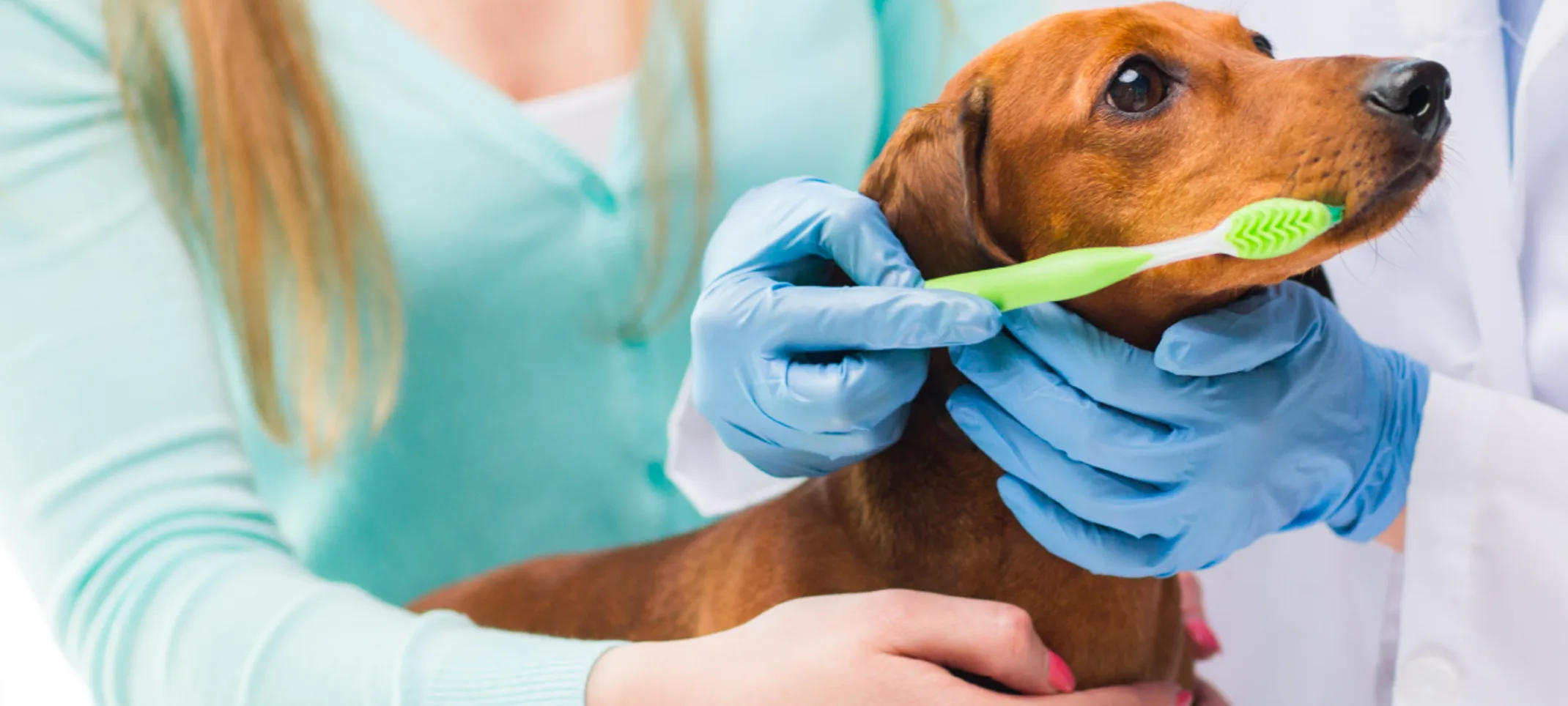Acoaxet Veterinary Clinic
Canine Dental Diseases
Although periodontal disease is one of the most common dental concerns with dogs, there are a number of other conditions that could impact your companion’s dental health.

Development Issues
If a dog’s primary teeth do not fall out when they should, the permanent teeth will not have enough room to grow properly. This can be very painful for dogs, and should be addressed as soon as possible. Examples of oral development issues include:
Enamel Hypomineralization – Hypomineralization of the enamel occurs when there is a lack of adequate mineralization with an otherwise normal enamel deposition. Over time, the tooth will develop a dull appearance due to the enamel loss on the surface of the crown.
Enamel Hypoplasia – This is a tooth defect caused by a defective enamel matrix formation. The tooth’s enamel appears normal in some areas, but there are spots of missing enamel in which there is discoloration.
Missing Teeth – Sometimes a tooth never grows in, creating an empty space between two other teeth. Causes can include root damage, impacted teeth, cysts, or biological factors.
Retained Deciduous Teeth – This occurs when the baby tooth is not pushed out by the incoming adult tooth.
Rotated Teeth – A rotated tooth is when the tooth grows in perpendicular to the normal arch of the rest of the teeth.
Supernumerary Teeth – These develop from an eruption of permanent, adult teeth in the oral cavity.
With most canine oral development issues, we typically recommend the removal of the problematic tooth or teeth. This will prevent any future orthodontic issues, and ensure the best oral health for your dog.
Fractured Teeth
Animals often fracture their teeth by chewing on hard objects such as hard chew toys, crates, cage doors, or even chain-link fences. Serious traumatic events such as aggressive training or fighting can also cause broken teeth in dogs. Fractured teeth can be painful and cause infections that lead to swelling inside the mouth as well as significant facial swelling.
Young dogs most commonly fracture their primary canine teeth. In adult and mature dogs, the maxillary canines are the most commonly fractured teeth. There are also many incidents of broken mandibular canines, maxillary fourth premolars, and incisors. If your dog is suffering from broken, fractured teeth please contact us today to discuss treatment options.
Oral Trauma
Conditions include fractured jaws, root fractures, luxation, and lacerations. Oral trauma can be caused by excessive wear and tooth grinding, blunt force trauma, and other accidents. X-rays and a complete oral examination can determine the exact cause and best course of treatment for your dog.
Oral Tumors
Oral tumors can manifest in various shapes and sizes. Tumors may be benign or malignant; after diagnosis, we can determine the most effective course of treatment that could include surgery, chemotherapy, or radiation.
Benign tumors include:
Gum Chewers Lesion
Viral Papilloma
Peripheral Odontogentic Fibroma
Acanthomatus Ameloblastoma
Malignant tumors include:
Fibrosarcoma
Squamous Cell Carcinoma
Malignant Melanoma
Plasmacytoma
If you believe your pet has signs of any oral trauma, dental fractures, or tumors, please contact our office right away to schedule an examination.
